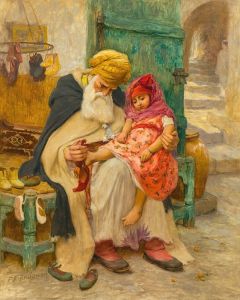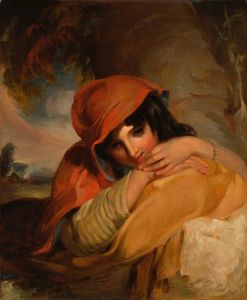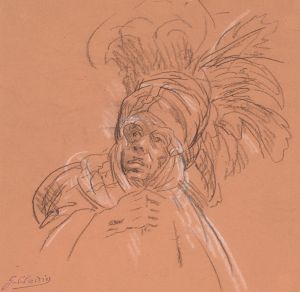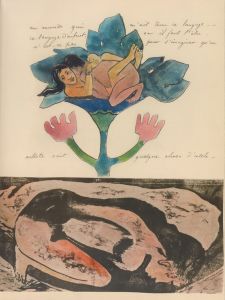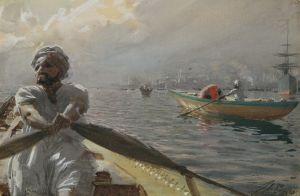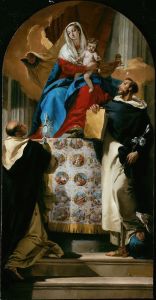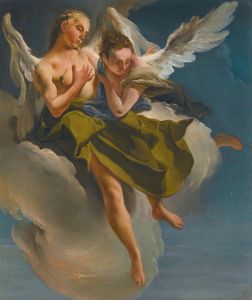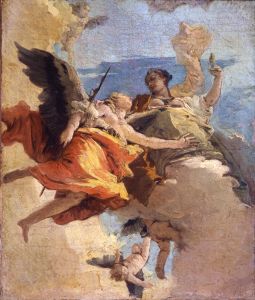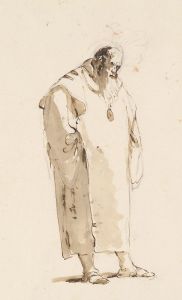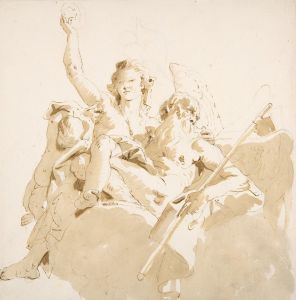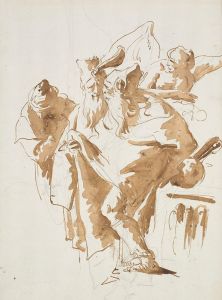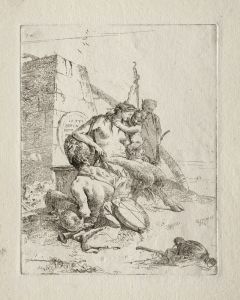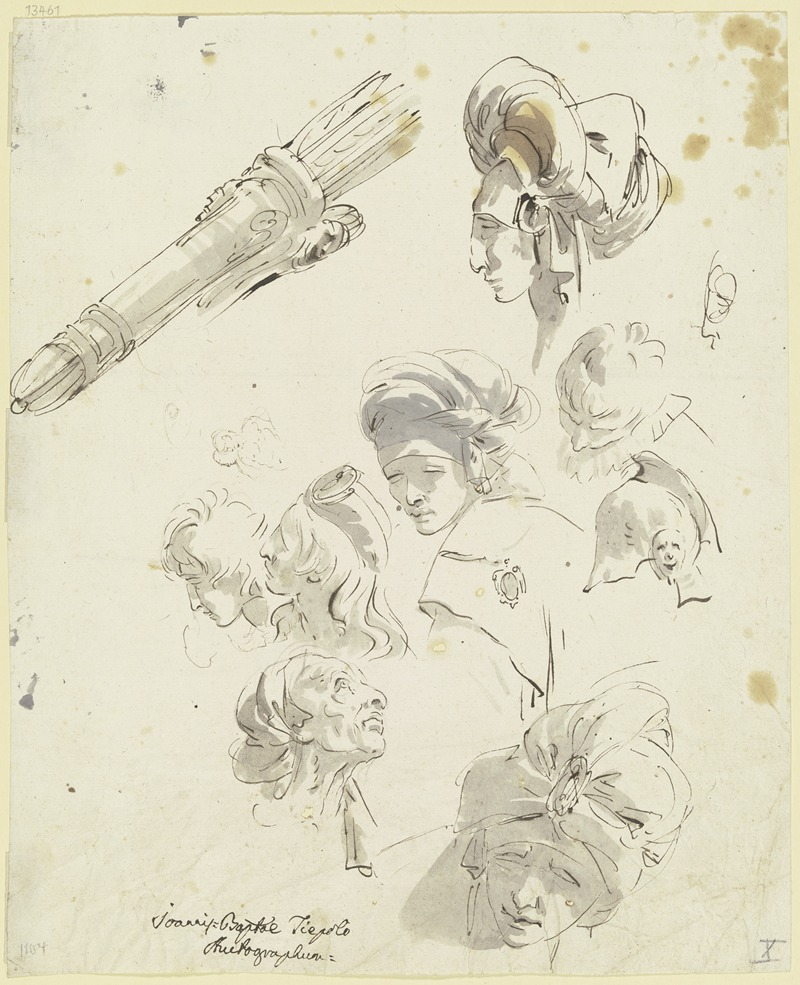
Verschiedene Köpfe von bartlosen Männern mit turbanartigem Kopfputz; links oben ein Köcher mit Pfeilen
A hand-painted replica of Giovanni Battista Tiepolo’s masterpiece Verschiedene Köpfe von bartlosen Männern mit turbanartigem Kopfputz; links oben ein Köcher mit Pfeilen, meticulously crafted by professional artists to capture the true essence of the original. Each piece is created with museum-quality canvas and rare mineral pigments, carefully painted by experienced artists with delicate brushstrokes and rich, layered colors to perfectly recreate the texture of the original artwork. Unlike machine-printed reproductions, this hand-painted version brings the painting to life, infused with the artist’s emotions and skill in every stroke. Whether for personal collection or home decoration, it instantly elevates the artistic atmosphere of any space.
Giovanni Battista Tiepolo, an Italian painter and printmaker of the 18th century, is renowned for his contributions to the Rococo style and his mastery in creating dynamic compositions filled with light and movement. One of his lesser-known works, Verschiedene Köpfe von bartlosen Männern mit turbanartigem Kopfputz; links oben ein Köcher mit Pfeilen (translated as "Various Heads of Beardless Men with Turban-like Headgear; Top Left a Quiver with Arrows"), is a drawing that reflects his skill in capturing human expressions and exotic themes.
This artwork is a pen and ink drawing, a medium Tiepolo frequently used for studies and preparatory sketches. The piece features a series of male heads, all beardless and adorned with turban-like headgear, arranged in a loose composition. In the upper left corner, a quiver with arrows is depicted, adding a subtle narrative or symbolic element to the work. The drawing showcases Tiepolo's ability to render intricate details and his fascination with diverse cultural motifs, which were often inspired by the growing European interest in the "Orient" during the 18th century.
Tiepolo's interest in exoticism and costumes is evident in many of his works, as he often incorporated elements that evoked distant lands and cultures, blending them seamlessly into his compositions. This drawing, while not a finished painting, demonstrates his keen eye for detail and his ability to convey character and individuality through simple yet expressive lines. The turban-like headgear and the quiver suggest a possible reference to Eastern or Middle Eastern themes, though the exact context or purpose of the drawing remains unclear.
As with many of Tiepolo's drawings, this piece may have served as a study for a larger work or as an independent exploration of character and costume. His drawings were highly valued during his lifetime and continue to be appreciated for their technical brilliance and insight into his creative process.
The artwork is part of Tiepolo's extensive body of work, which includes frescoes, paintings, and drawings. His legacy as one of the most important artists of the 18th century is firmly established, and his works are held in high regard by art historians and collectors alike. This particular drawing is an example of his versatility and his ability to capture the essence of his subjects with minimal yet effective means.





